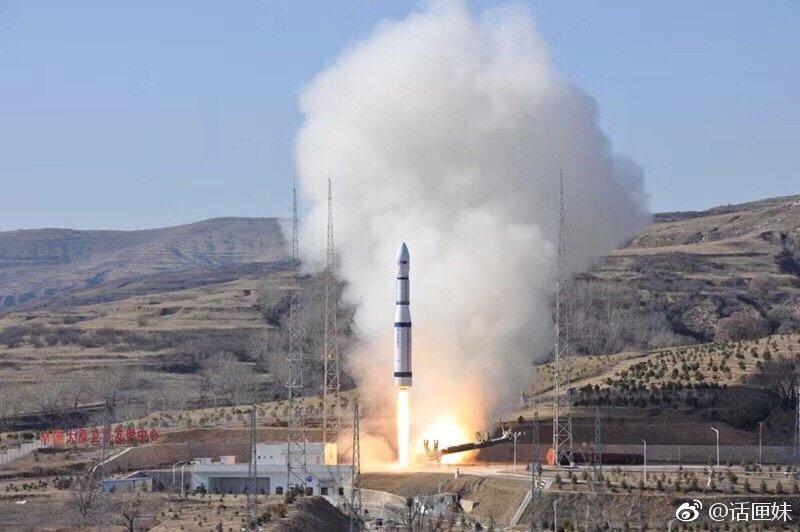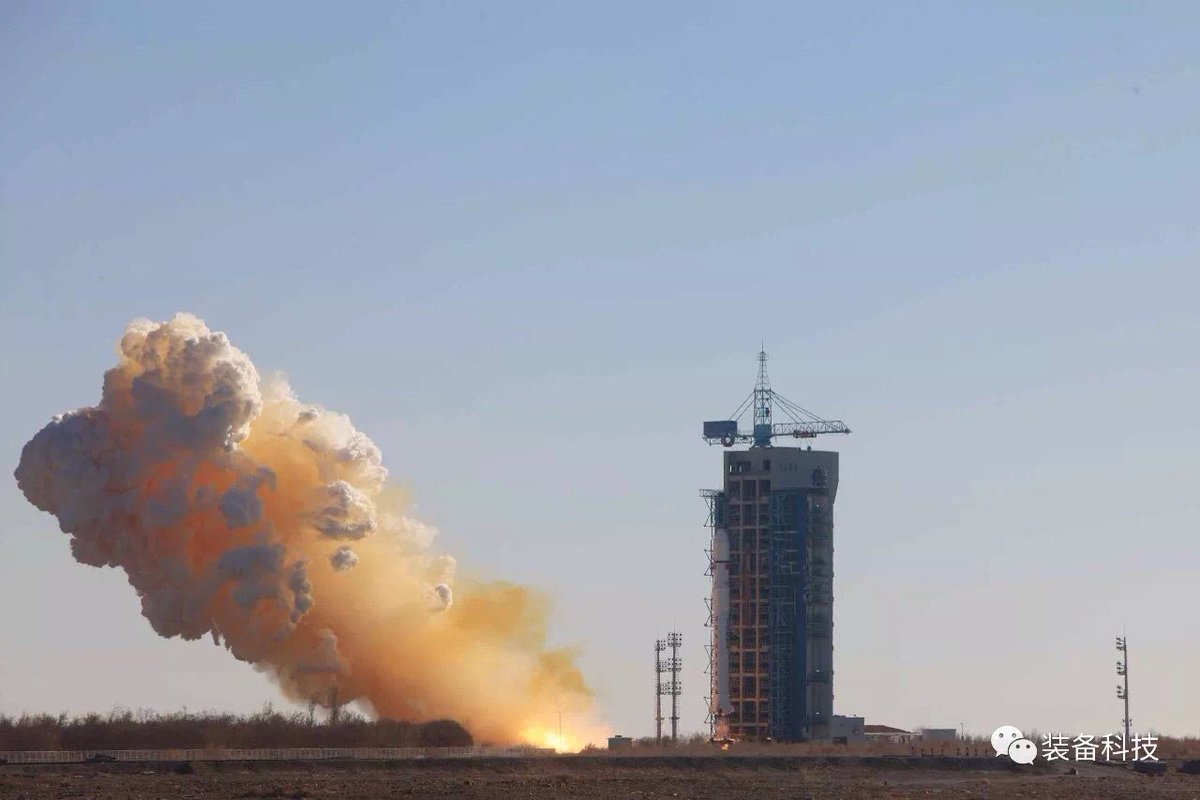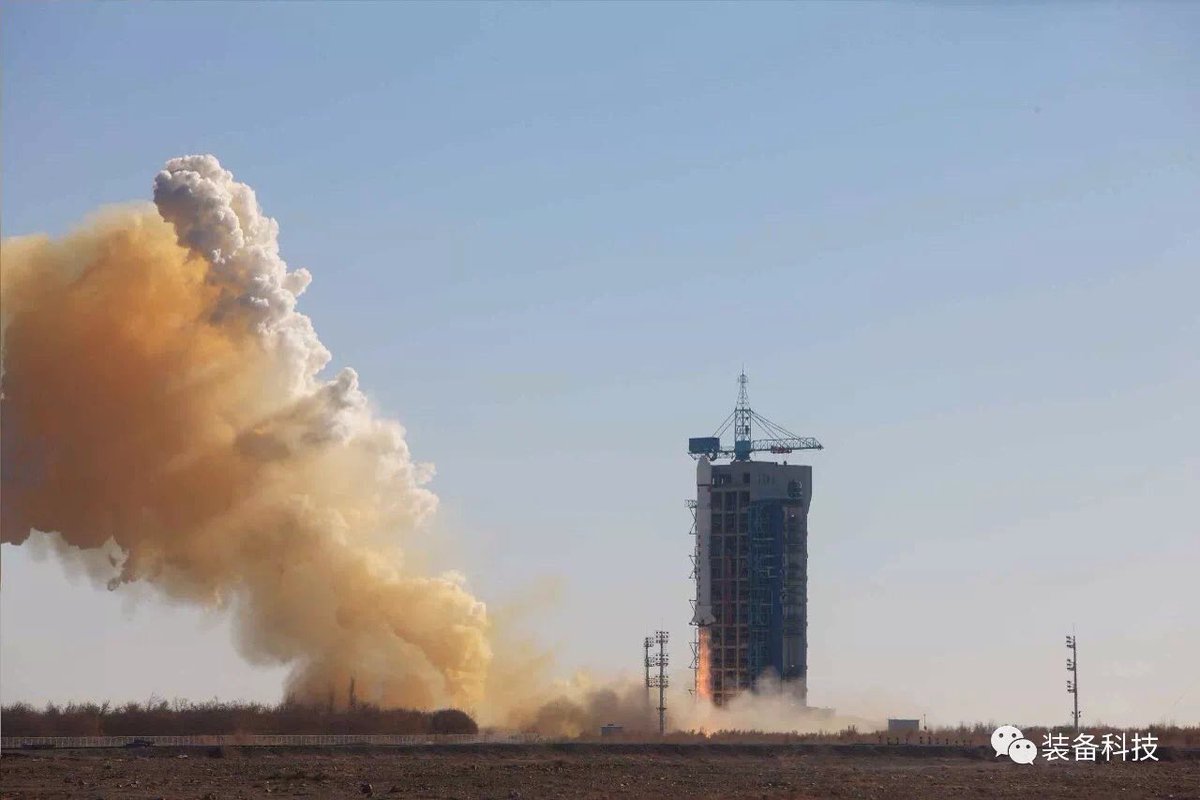Interesting China just launch a maritime satellite AIS(Automatic Identification system) to identify 60000 ship sailing in near sea (E China, SCS, bohai) and weather satellite FY 4 that will improve the weather prediction from 6 to 4 hr. Here is Henri K take on the subject
More than a year after the failure of its
CZ-4C launcher that caused the total loss of the military radar satellite
GF-10 , Shanghai Academy of Spaceflight Technology (SAST) was able to put the new early yesterday morning, the new Chinese weather satellite
FY-3D (风云 三号 04 星) in sun-synchronous orbit with the same launcher.
This 12th Chinese space launch of the year took place at the Taiyuan Space Center (TSLC), he also embarked with him a nano maritime satellite
HEAD-1 (和 德 一号) from China Head Aerospace Technology Co.
The start
Specializing in Sun-synchronous orbit (SSO) launches, such as its twin
CZ-4B , the CZ-4C rocket is designed in Shanghai by the SAST Institute, a subsidiary of the Chinese aerospace group CASC. Commissioned in 2006, the CZ-4C has an initial carrying capacity of 2,944kg for an orbit at 700 km altitude, or 2,791kg up to 800 km.
The launcher experienced only one failure in 21 launches, during its 20th flight in September last year to put into orbit a Chinese military satellite. After a series of investigations, SAST decided to make several changes to the rocket Y21 serial number and used for the launch of the FY-3D satellite, as a new
YF-40C engine re-ignited twice for the 3rd floor, a greater bandwidth control system, the addition of two onboard surveillance cameras and a new control system to be able to continue to monitor the 3rd floor once separated satellites.
For reasons that are still unknown, this shot has already been postponed at least twice. Initially it was about to make the launch in 2015, then postponed until November 2016. The FY-3D satellite and rocket finally passed their factory exit certification in Shanghai on June 21, 2017, and left both at launch site early July.
It is therefore two years late that the CZ-4C Y21 finally took off from the TSLC space center this Wednesday, November 15 very early in the morning, at precisely 02: 35: 54.570 Beijing time.
A single message to aircrew (NOTAM) has been issued to signal the presence of a fallout zone, which should be the same as that for the return of the 2nd floor.
A3404 / 17
Q) ZXXX / QRTCA / IV / BO / W / 000/999 / 3010N10920E032
A) ZHWH ZPKM B) 1711141828 C) 1711141853
E) A TEMPORARY RESTRICTED AREA ESTABLISHED bounded
BY: N294034E1093231-N294717E1085606-N304016E1090853-N303329E1094536B
ACK TO START . VERTICAL LIMITS: GND-UNL.
F) GND G) UNL
It should be noted that China has also deployed one of its space monitoring and control vessels -
Yuan Wang 6 (YW-6) - in the Indian Ocean to assume the role of the control relay during the launch mission. .
The FY-3D weather satellite and the AIS satellite HEAD-1
The FY-3D weather satellite
Like the CZ-4C launcher, the FY-3D weather satellite is also designed in Shanghai at SAST. This 4th satellite of the FY-3 family replaces its predecessor
FY-3B , launched in November 2010 with a theoretical life of five years.
Once the tests in orbit are completed, the FY-3D will be networked with the FY-3C, launched in September 2013, and will provide the service called "the orbit of the afternoon." Compared to the latter, the FY-3D has embarked four additional payloads and unpublished on a Chinese weather satellite, namely a hyper-spectral infrared detector, a wide-angle imager for the observation of the aurora borealis, an ionospheric photometer and a hyper-spectral greenhouse gas sounder.
SAST has also upgraded two other instruments on board, the Medium Resolution Spectral Imager (MERSI) and the Data Collection and Distribution System (DCDS).
The HEAD-1 satellite
According to the latest data released by NORAD, the 2,250 kg satellite entered a 792 km × 812 km × 98.653 ° orbit with a frequency of 100.90 minutes. It joins a family of eight Chinese meteorological satellites currently in orbit (but only six are active), which will be enlarged between 2018 and 2021 with the arrival of four other FY-3 satellites, namely two satellites for the morning cover and in the afternoon, one in twilight orbit and one for low inclination rainfall.
This will improve the accuracy of the Chinese weather forecast by 3%, and increase the update period from 6 hours to 4 hours.
The second passenger enjoying the same flight as the FY-3D, there is a micro maritime satellite 45kg called HEAD-1 belongs to
. After separation with the CZ-4C launcher it was injected into an orbit of 790 km × 809 km × 98.657 °.
Designed by Shanghai Satellite Engineering Institute, a subsidiary of SAST, HEAD-1 is the first commercial maritime AIS (Automatic Identification System) satellite in China capable of receiving two million messages in 24 hours and identifying nearly 60,000 vessels. The power on board is 82 W and its estimated lifetime to two or three years.
The ground segment of the satellite is located in Shanghai, but the data is sent to Beijing at China Head Aerospace Technology headquarters for analysis.
Statistics
The launch of the FY-3D satellite and HEAD-1 is China's 12th space launch in 2017, the 21ᵉ for the CZ-4C launcher, and the 254ᵉ of the Long March launchers family.
For now, the Long March rockets of the group CASC total 243 successes and 11 failures, a success rate of 95.67%.
Here is the chart tracking all Chinese space launches since the first in 1970, including those not performed by Long March launchers -
Chinese Space Launches Tracking Chart - Date: 2017-11-15
Henri K.
POST TAGS













